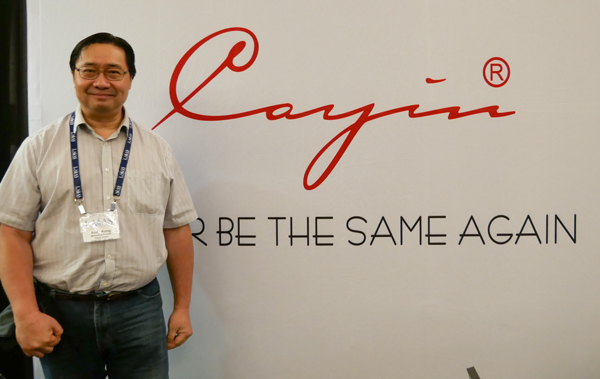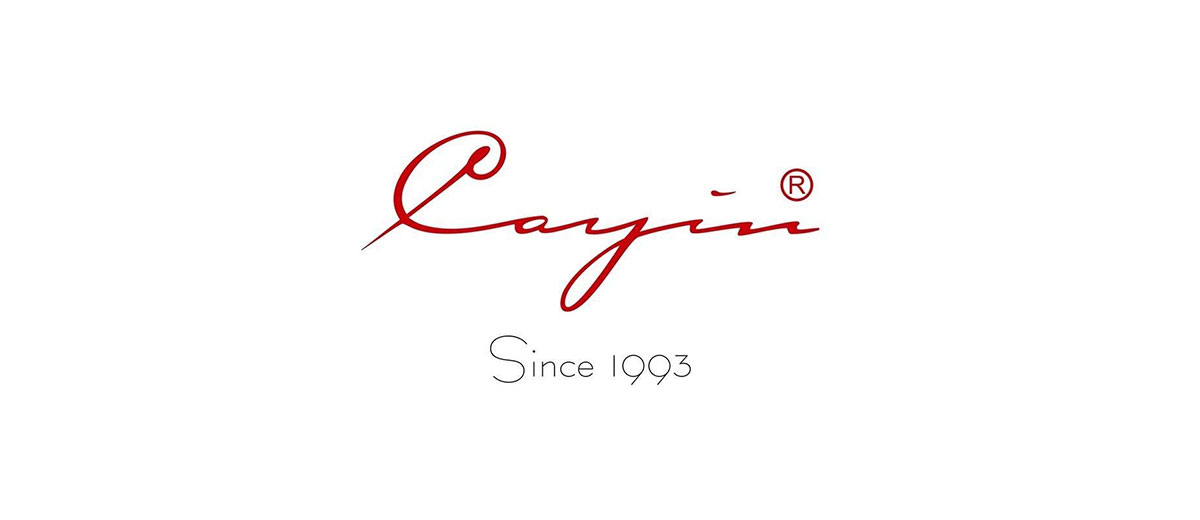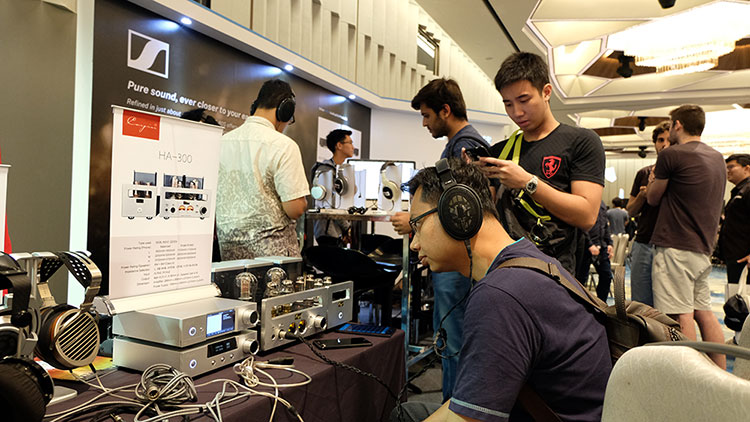Our Business In Audio series is a set of interviews where we delve into the challenges of growing and developing a company in today’s audio market and economy.
This is a slightly different slant from the usual product-focused discussions. Here we are more focused on the people and the business challenges in staying relevant in a competitive and ever-changing environment.
The companies we will speak to are from all around the world and both big and small. Our third company for this feature series is one of China’s top audio specialists for the last three decades and their effervescent marketing Director, Andy Kong. This is a must-read for entrepreneurs and audio enthusiasts.
Background
A lot of readers will know your brand and products but maybe not so much about you. Can you give us a little background on your career and why you started or work with this brand?
I started my career as a Faculty staff member at a local (HK) university teaching Computers and Information Systems and stayed there for 10 years. I started my IT System Integration business after that and joined the Hi-Tech venture capital business. I was involved in or led 3-4 projects during that time and all of them are related to Home Audio and Entertainment business, probably because my pet project was to develop a new generation of Home Entertainment appliances based on Internet and Home Networking technologies. By the time I look back and think twice about what I want to do, that’s another 10 years already.
I took a long break after that and decided to serve the needing community, so I spent another 10 years in charity, taking up projects to build orphanages in China and lining up education sponsors in the rural areas. When I decided to get back to business, I run into Cayin. I enjoy making new friends and meeting people who share the same passion with me, in person or online, so this is a perfect role for me and I am glad that I find someone paying me to do this.

What are the challenges in launching a new product into the market?
First of all, I don’t come from the traditional marketing camp, so my situation might be a bit unconventional.
To me, writing is the always the toughest part of my job, and advertising is something that I am not confident with. Every time when I need to create a brochure or a Sales Guide, writing a Press Release, copywriting for whatever occasion, or even just working out a slogan for an advertisement, my productivity will go all the way down.
Language is my biggest weakness, I am a numerical man, I come from Mathematics and IT background and always try to be logical. I was trained to believe that all questions should have a definite answer, but marketing contents is a different ball game. You need to leave some blanks for the customers to visualize, or go for a kind-of fuzzy presentation in order to promote something that you are 90% sure only. So marketing related writing in Chinese is not easy for me, let alone doing it in English which is my not-so-fluent second language.
If you could define your typical customer, what would they be?
This is straightforward: anyone who is passionate about music, and wants to enjoy their music in a high-quality music system, they are my potential customers; the Asian called this the Audiophile market or the “Fever” market.
Back in the time when I was a reviewer of an Audiophile magazine called Journey to Sound, they have this column called 105 degrees, and that was referring to the body temperature when you had a fever. We are so passionate about our sound systems that we are, to the others, are a bunch of sick people. That is the kind of devotion behind the “Fever” market, it does not necessarily mean big money or expensive toys, but to spend every bit of your resources so that your sound system will sing well, and keep pressing on to get the final 1% improvement out of it. This is a market that value high quality, refinements, and most important, places the sound performance as it’s top priority.
The reason that I get hooked with Cayin is that I noticed Cayin’s devotion. Take the N3 DAP as example, this is an entry level DAP at $150. At this price range most DAP developers will focus on looks, UI, and features, but Cayin insisted that audio performance is still the top priority item on N3. We are kind of OK on all these, not the best but meeting the reasonable expectation at this price range. However, when we come to the audio section, we fine-tune the digital and analog circuit with passion and competence, and an out of proportion BOM on audio components. Basically, we put in as much attention as we did to our more expensive players. This is how we approach the market, a very niche market with devoted customers.
Right now, which geographical and vertical markets hold the most traction with you? Is there a different pitch you need to work within each of your key markets?
Japan and US are getting a lot of positive attention, and we are active at the sub-$1000 market segment. We are working very hard to stretch into the premium market as that will offer more leeway to our pricing and product development, and this applies to both DAP (portable) and headphone amplifier product line.
The Japan market has a strong tendency towards portable audio. We started to explore the desktop market after we spent 3 years to develop our recognition and tubes seems to be the appropriate entry point. It is important to identify the correct product mix or service preference when we target at a particular market segment. For instance, iDAC-6 and iHA-6 draw a lot of attention and HA-1Amkmk2 is a slower product relatively, but HA-1Amk2 works out pretty well in Japan and we can use it as an ice-breaking product to expand our market coverage.
The US has a different situation. They are fairly open-minded to new brands and new products, but they take service pledge seriously. They always assume you are a good brand providing good products and service, but whatever you have promised, you better deliver. This is a very different consumer culture when compared to Asia. Especially the Chinese market as they tend to be fairly skeptical to new brands and new products but are more forgiving after they bought your product.
Fortunately, Cayin gives me full autonomy in marketing our brand and product to oversee markets, so I can work independently and adjust our pace to fit into different culture and patterns. I have seen brands from China who take it for granted that the way they do things back home is applicable in the US. They do enjoy a brief honeymoon but they can’t go very far after that, and it takes them a hard lesson to understand that you don’t get away when you failed your promise in the US.
How significant or important do you think partnerships with other audio companies are in this day and age? Does secondary product marketing play a strong influence on how you approach your core product marketing?
Glad you asked this question. I think this is a key issue right now and should receive even more attention in next few years. Cayin has collaborated with around 9-10 different brands to a different extent in the past two years. Mainly headphones and IEM manufactures but we are starting to work with cables brands, and all of them proved to be 1+1>2 experience.
One of the important issues in marketing in the internet era is the propagation rate. We can visualize brand marketing as a collection of messages that need to get across to our target audience and finally, catch them through a series of recognition and empathy. You get a lot of likes and shares as a result of that. When we partner with other audio brands, we have basically opening up our brand audience to each other. If we selected the right “messages” during this exchange, a message that highlights the common value, this is indeed one of the most effective exercises to propagate our branding message to different existing groups of the target audience.
On top of the branding implication at a higher level, brand collaboration also offers a lot of practical value. When a Cayin DAP partners with an IEM to create a bundled package, this also creates an opportunity as well as exploring sales networks. When we share a room or exchange our product at an exhibition, we can lower our marketing cost and establish mutual recognition that will be reflected in media coverage, especially with social media and word of mouth. So the options are unlimited, to a certain extent, it’s up to the open innovation and trust of the brand culture and people behind the wheels.
How much of a factor are personalities in driving a brand’s success? For example, Steve Jobs and Apple often went hand in hand. Is that something you believe in or do you prefer the product to stand on its own two feet?
It really depends. Take Cayin for example, our tube amplifiers have a strong history and reputation, we don’t have a figurehead for these product lines, we don’t need to because they are products that can stand on its own feet.
Our personal audio products are in a different situation. We are new to the market, and innovation and exploration are important subjects. With these, the personality factor helps tremendously.
In our domestic (China) market, our CEO Thomas Leong plays this role tremendously well. In the overseas market, this becomes part of my duty. There is a joke in HeadFi forum that Cayin DAP has a feature called Andy Kong and this can’t be copied by other brands, so I guess this works out pretty good given I am on my third year with Cayin only.
How much of a factor are trade shows and meeting your customers in person when it comes to your product strategy?
This is indispensable to me. Cayin is in a niche market where personal preference and experience plays an important role, if not THE most important role, so making sure they have a positive and “appropriate” experience with our products in person is highly desirable, or even irreplaceable.
I spend a lot of time online to interact with users and customers, probably more than any other brand representative on public online platforms, but no matter how hard I try, there is nothing like a face to face interaction at trade shows or meets. It can be 5-10 minutes acquaintance only, but that’s all it takes to get the message across and develop a brand-customer relationship that will last several years.
For instance, I just completed CanJam Singapore last month, and I meet a lot of online readers/customers at the show. I had a dozen of visitors, online reviewers, and forum KOLs drop by every day saying it was a pleasure to finally meet me in person. They are not necessarily someone I have engaged online previously, or some of them are what we called CDROM (read-only members), but being able to audition a sound system together, and exchange our thoughts and impression interactively will bind us together as audiophile buddies, so I enjoy doing it, and strongly recommend other audio manufacturers to give it a try.
Click on Page 2 below for Andy’s thoughts on the future of portable audio








